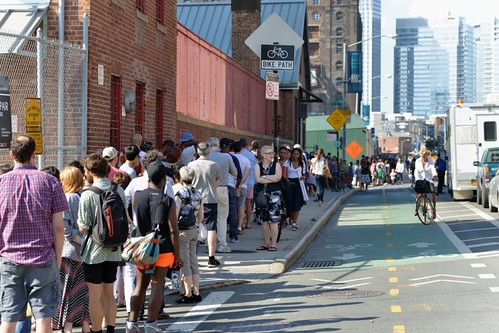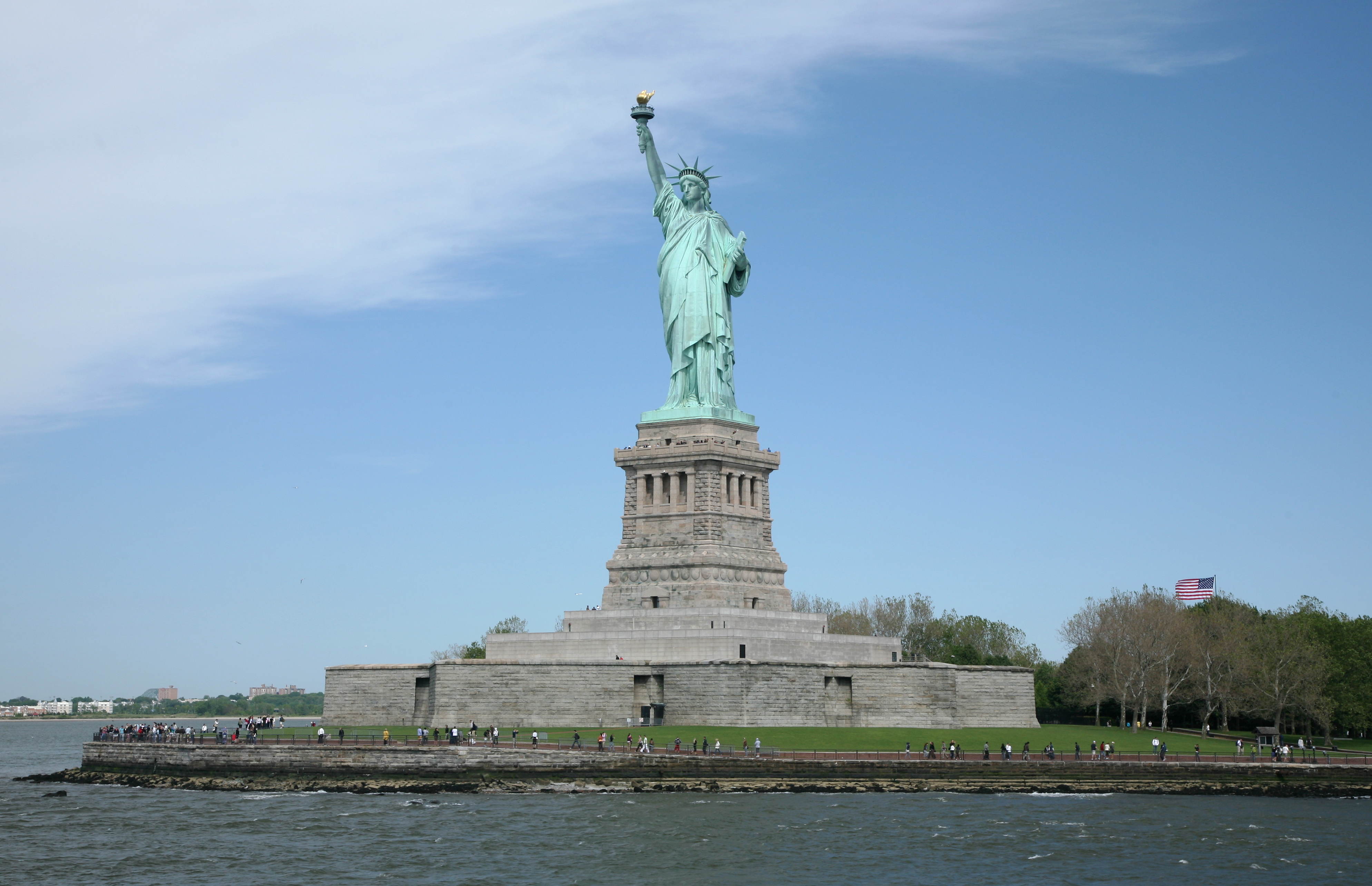Over the weekend, the Staten Island Economic Development Corporation (SIEDC) launched a campaign to build an aerial tramway across New York Harbour.
At over 5 miles long, the tram would cross from the St. George port in Staten Island to Whitehall port at the southern tip of Manhattan.
The proposal—estimated to cost $175mm USD—is mind-bogglingly ill-conceived and doomed to fail. Here’s why:
ONE — Total trip (and wait) times will be too long.
If you’re lucky enough to have a tram car waiting for you upon your arrival at Whitehall or St. George, fantastic. If not, you could be faced with a wait time of up to 15 minutes between vehicles. Add to that the 14 minute journey time, and suddenly you’re faced with a pretty dismal total travel time of roughly half an hour.
The former scenario above, however, assumes that you arrive at the terminal, there’s a vehicle present and there’s space for you to board. But that’s a wild assumption in a place like New York.
Given the tourist-appeal of the system, queues would be a constant. With only 160 people in the queue total travel times would eclipse 45 minutes. With 240 people in the queue, total travel times would be over an hour.
Anyone whose ever queued to get into one of New York’s more popular attractions, knows that a lineup of over 200 people isn’t the exception, it’s the rule. Wait times for this system will make it all but useless to commuters and will instead be frequented solely by tourists.
TWO — The system won’t move enough people.
The offered capacity of a fixed grip system such as an Aerial Tram is directly related to the speed of the system and its length. As the technology only has a maximum of two vehicles shuttling back-and-forth between two stations, the longer the system is the fewer the people it can move.
At over 5 miles in length this would likely be the longest aerial tram in the world and would be capable of an offered capacity of roughly 312 persons per hour per direction (pphpd). Suburban bus routes in Phoenix offer more capacity than that.
SIEDC presentation materials suggest that the Aerial Tram would be capable of moving 15,000 people per day. That number, however, is a total fabrication as the actual numbers are far, far below that.
In order to reach that magical 15,000 mark, SIEDC makes four massive—not to mention incorrect—assumptions.
Firstly, SIEDC assumes that there will be next to no dwell time in stations to allow for embarking and disembarking passengers. Based upon my back-of-the-envelope calculations, once you add in three-and-a-half minutes for boarding and alighting, the system capacity would drop from 312 pphpd to 275 pphd—an almost 12 percent reduction. The reality of the situation is that 3.5 minutes for boarding and alighting is optimistic at best and would likely be closer to 3.5 – 5 minutes—with equivalent reductions in capacity to follow.
Secondly, SIEDC assumes that there will be equal passenger flows throughout the entire day. As in every hour of the day every day of the year. Basically, SIEDC expects the tram will be full to the rafters at all hours of the day including at 2am on Christmas morning. This assumption does, however, actually make some sense as the lineups to get on the system are likely to be so long that a tourist who gets in line on Thanksgiving morning probably won’t actually get to board the system until Christmas Eve.
Thirdly, SIEDC assumes 24 hour a day operation. This is the most egregious assumption because it fundamentally misunderstands cable car technology.
An Aerial Tram, like all other forms of transportation technology requires daily maintenance. 24 hour a day operation is simply not possible. The only way to actually achieve 24 hour a day operation is to build what’s known as a Dual Haul configuration. In laymen’s terms, a Dual Haul is actually two separate Aerial Tram systems built in parallel to appear as though they are a single system.
This means that during off-peak times, one of the two systems can be taken offline for maintenance while the other system remains in operation. This is exactly the type of configuration that’s used in New York’s Roosvelt Island Tramway to great success.
The problem?
The electro-mechanical equipment for a Dual Haul configuration is significantly more expensive than a standard Aerial Tram (logically, because you’re doubling a given number of system components). Furthermore, a Dual Haul configuration implies that for at least 50-25% of the system’s operating time, the system is running at half capacity because one of the two systems is being maintained.
That means that during off-peak hours, headways between vehicles will—at best—be 30 minutes and system capacity, already abysmal to begin with, will be halved to less than 150 pphpd.
If we assume an 8 hour off-peak period where only one of the two systems is operating, then the total maximum number of people this system could move—in both directions—is a paltry 11,000 people per day—more than a quarter less than what SIEDC is reporting.
In other words, the SIEDC is contemplating spending $175 million United States dollars on something that can move fewer people than New York Water Taxi’s Shark Boat.
Three — Water, water everywhere.
Can cable cars cross water? Sure they can. Been done dozens of times in places like Vietnam, Sweden, Germany and even in New York City itself.
But let’s contemplate that New York City system for a second. The Roosevelt Island Tram crosses the East River for only 0.2 miles and it does so with not a single tower in the river.
The Staten Island Tram, meanwhile, would have to cross five miles of the Port of New York and New Jersey. That’s 25 times as long a water crossing as the Roosevelt Island Tram, so forget about doing this crossing without intermediary towers. To build this thing there’s going to have to be towers in the water—lot’s of them.
The complexity involved in how such a system would impact the navigable channels of the one of the world’s largest and busiest natural harbours is unimaginable. The aesthetic impact it would have, meanwhile, would be catastrophic.
A direct route from St. George to Whitehall would cross directly in front of the Statue of Liberty which is perhaps the most important American icon next to the stars-and-stripes itself. A feature which is synonymous with the arrival of millions of immigrants on American soil and is a beacon of hope to the entire world would be intruded upon by something that would look not unlike an empty clothesline.
Whether you agree with my seeing this as an aesthetic issues or not is besides the point. Many people will see this as a aesthetic issue and will fight to the end to prevent such a development, full-stop.
Look at the opposition to the Grand Canyon Escalade, magnify that by a thousand and that’s the kind of conflict SIEDC has in store for it.
There are other issues to be taken with this project—
- SIEDC states that the system length is reported to be 5.75 miles long, but the measured distance is closer to 5.15 miles. That perhaps suggests an intermediary turning station at some undisclosed waypoint in between. That’s impossible, however, as Aerial Trams can’t turn corners.
- SIEDC compares the cost per mile of a subway at $400 million to the cost per mile of a cable car of $33 million. Sure, okay. But to get the equivalent capacity of a subway (assuming 20,000 pphpd), you’d need to build 73 parallel cable cars at a cost of over $2.2 billion (billion, not million) per mile.
- SIEDC makes no mention of operations & maintenance costs which any transportation planner knows is as important, if not more important, than the total capital cost.
- As stated previously, the wait times on this system will cause it to be used solely by tourists. This brings into question how the SIEDC can expect 50% of riders to be local commuters. And if it is only used by tourists, why would one have it operating 24 hours a day to begin with?
None of these minor issues are really all that relevant, however, in the face of the overwhelming evidence that this is a colossally terrible idea from its beginning to end.
Are there opportunities for Cable Propelled Transit systems in the NYC area? Most definitely. Perhaps even some good ones from Staten Island. The fact that the densest concentration of people in America is located on an island in the middle of a natural port that’s plagued by bottlenecks and over-capacity bridges and tunnels is evidence enough. The fact that the Roosevelt Island Tram has been operating successfully for decades, further proof.
But this is the wrong project with the wrong technology with the wrong alignment presented with the wrong information.
Choosing to build something in New York is hard enough in itself. It’s like choosing to climb Mount Everest. It’s expensive, challenging and fraught with peril, but hundreds of people manage to pull it off every year.
What SIEDC is trying to do with such a fundamentally wrong cable car alignment and technology choice is like trying to climb Mount Everest alone, in the dark, without oxygen and wearing only your underwear.
Good luck with that. Tell us how it works out.





2 Comments
There are also double decker Aerial tramways but even a capacity for 500 persons would be too low.
I the supporting cables would be too long for a direct crossing. That means that the supporting cables need to be anchored and tensioned somewhere on the way. That is already a trouble in Alpine environment but over water it would be even more troublesome. The pulling cable will also on the limit of the maximal distance. The cable will be very heavy so acceleration and speed might be limited.
Gondolas could be an option as they do not need to directly and only need to cross short spans. Still it would be a very long system. But with reduced wait times and intermediate stations.
Dont forget they are also cable propelled boats. But in this can not practical because the cable would interfere with shipping lines
At the end i also would tend towards the railway tunnel. Connected with the Staten Island Railway many stations could be served. Which means more direct routes and less transfers for passengers.
I agree with your post. Building this project would also help give urban gondola transport a poor image.